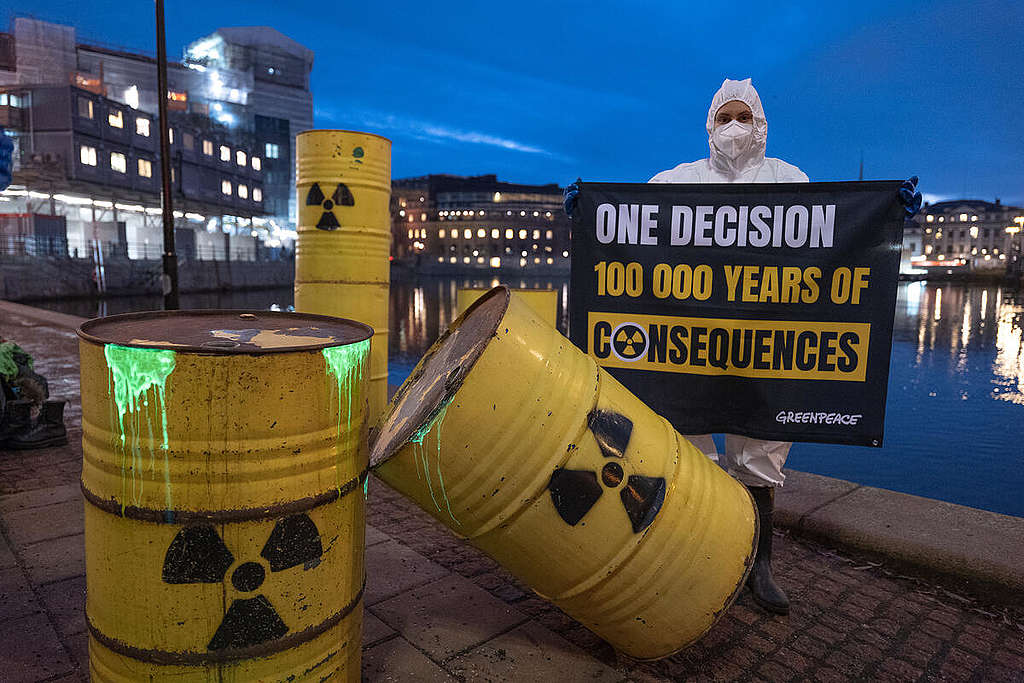Stockholm, January 27, 2022 – Today, the Swedish government approved the continued development of the Swedish final repository for radioactive waste from the Swedish nuclear power plants, despite heavy criticisms from independent scientists. The case is being referred to as Sweden’s largest environmental case ever and is about whether the spent nuclear fuel can be stored safely for at least 100,000 years can be assured.

– Even after decades of research, it is clear that there is no method available that can guarantee a safe final repository of spent nuclear fuel for 100,000 years. Instead of giving in to pressure and making a decision on scientifically uncertain grounds, the government should have demanded further research and evidence from the nuclear power industry, says Rolf Lindahl, climate and energy campaigner, Greenpeace Nordic.
The method proposed so far is that the waste should be stored in copper capsules that are buried in rock chambers 500 meters underground and filled with bentonite clay. However, several researchers and corrosion experts have shown that the copper capsules risk corroding much faster than foreseen, and could start leaking already after 100 years, and there is no scientific evidence that proves that the method is safe.
– There is no quick solution to the extremely complex problem of dealing with nuclear waste. It is irresponsible of the government to go ahead with the current method that the nuclear power industry has proposed. We owe future generations a safe storage of the radioactive nuclear waste produced, says Rolf Lindahl.
The Land and Environment Court in Sweden has previously stated that there is “no sufficient support for the final repository to be safe in the long term” and that the activity is permissible only if the Swedish Nuclear Fuel and Waste Management, SKB reports evidence that clarifies that the final repository is safe in the long term also with regard to the canisters protective capacity ”, which according to a number of independent researchers they have not been able to do. Rather, the opposite has been reinforced, introducing more more uncertainties. The researchers have also drawn this to the government’s attention before the announcement.
– The nuclear power industry is keen to get the unresolved problem of nuclear waste ”out of the way”, but the decision that came today can still be appealed. We are far from having a safe method of dealing with the final repository of radioactive nuclear waste, says Rolf Lindahl, Greenpeace.
Photos for media can be downloaded here:
Contact info:
Rolf Lindahl, climate and energy campaigner, Greenpeace Nordic
[email protected]
+46 703 97 58 70
Ludvig Tillman, communications officer
+46 702 71 64 37
